What not to do when publishing historical fiction
A deep dive into historical fiction | Article 6 of 7
Are you an aspiring writer who has a concrete goal to (one day, eventually!) ‘get published’?
Do you have experience in the world of traditional publishing but have become jaded with the industry that appears to promise wealth and success - yet seemingly only for a tiny, tiny minority?
Perhaps, like me, you’re dipping your toe into the water of writing for a broader audience and are intrigued by the possibility of having your book out there on physical or virtual book shelves…
If you are any of these people - and even if you’re not - welcome here!
I’m Holly, if we haven’t met before, and I write about all things medieval history/archaeology and historical fiction. I am passionate about writing creative stories that engage a range of audiences in discussions of the past that overcome cultural stereotypes, which means that I seek out subjects and characters that aren’t what usually make it into the history books. If that sounds like you, do make sure to join our community of readers and writers, where we connect regularly over books, biographies, historical discussions, and Q&A/ask-me-anything chats.
This is the sixth post in my current series taking a deep dive into the world of historical fiction.
Specifically, why we write/read it, how to get published in it, and what we think are the best examples out there, on and off Substack.
You can read previous posts in this series at the link below.
What not to do - one author’s experience
Today’s article has kindly been put together by
, published author and writer here on Substack. seeks to revive the serious popular novel, the kind of story that finds the truth of the human condition in action, adventure, romance, and even magic. He is the author of the historical novel series Cuthbert's People (The Wistful and the Good, St. Agnes and the Selkie, The Needle of Avocation) and the literary fairy-tale Lady Isabel and the Elf Knight. He writes the newsletter, Stories All the Way Down, which examines serious popular fiction in theory and practice. Subscribe to his newsletter at the link below.When I put out a chat thread asking for potential contributors to this series,
said that he could do something on what not to do - and I was immediately intrigued. I hope you enjoy his reflections on a career in historical fiction as much as I did!Describe your experience in publishing historical fiction.
I grew up reading The Eagle of the Ninth and Puck of Pook’s Hill, and later the Hornblower books, so historical fiction was just part of my literary education. It certainly wasn’t the only part. Nor was it the kind of tightly defined genre it is today. I didn’t really think of it in genre terms, I thought of it as stories that happened to be set in the past, along with stories that happened to be set at sea or in space or in Faerie. I still do. Genre has never been the defining feature that attracts me to a book, either as a reader or a writer. (This is the first of my many what not to dos -- genre is everything in the publishing industry.)
I wrote in a number of different genres growing up, things that would be called science fiction or fantasy or literary fiction. They were all bad, and I burned them long ago. When I decided to take it up again I glanced around at the historical fiction scene and thought, no one is writing about the Anglo-Saxons. (This was while Bernard Cornwell was still writing about the Napoleonic wars.) If I write about that period, I reasoned, my work will stand out, and that will improve my chances. (What not to do number two.) That’s not how historical fiction works, but it was many years of false starts and near misses before an agent was finally good enough to tell me, “It’s a great story, but I can’t sell a book about the Anglo-Saxons unless your name is Bernard Cornwell.”
That was the watershed moment for me. It was because of that that I figured out that historical novels sell first and foremost based on their subject matter. And once you realize this it becomes obvious. Hang around historical fiction groups on Facebook and you will see all kinds of requests for recommendations for things like novels set in 13th-century Romania or novels about Catherine Parr’s aunt’s second cousin. A writer with an established audience can switch from writing about a popular period like the Napoleonic wars to an unpopular one like the Anglo-Saxons and take their audience with them, as Bernard Cornwell did. But unknown writers will have some very heavy lifting to do to open up a new era that no one is asking for.
I realized then that my chances of finding an agent for that book -- The Wistful and the Good, the first book of my Anglo-Saxon series -- were slim and I started looking elsewhere. Soon after this, I came across a small press who were interested in The Wistful and the Good. However, our ideas about how the book should develop were so far apart that we parted company. Shortly after that, more to clear out the workshop to make room for new work than for any other reason, I put what were by then three books out on KDP.
The three volumes I have published so far have all had enthusiastic reviews from the Historical Novel Society, including an Editors Choice, which is welcome confirmation that the books were actually worth publishing. But the lesson learned here is that publishing is a very specific business with very specific requirements, and it is better to know them before you begin rather than taking a couple of decades to learn them by experience like I did. I’ve made the joke before that the perfect historical novel would be the story of a plucky young woman who works as an aide to Churchill while dealing with the chauvinism of her fighter pilot boyfriend and who accidentally stumbles upon Churchill’s top-secret time travel project, gets transported back to the 16th century, and marries Henry VIII.
Why did you decide to write historical fiction?
I have two degrees in history, but that wasn’t really the reason that I decided to write historical fiction, though it certainly helped. But I don’t see historical fiction as a way to study or to learn history. History, as an academic discipline, is a forensic affair, full of doubt and dubious interpretation. A novel, by contrast, is a thing of perfect certainty. Even if it does not contradict the historical record in any known detail, it makes history seem much more certain than it really is.
Rather, I see the past as an ideal stage for telling many kinds of stories. We can start with the fact that people had to be much more self-reliant in the past. Now we have experts on call for everything, and we can fly from London to New York in six hours in perfect safety and comfort. There’s not much scope for adventure left. Moving into the past just makes storytelling easier.
Then there is the element that if you write about a story “ripped from the headlines,” you know that your readers are all going to be on one side or the other, and they are going to expect your story to be 100% on the side they support. That makes it difficult to explore the more difficult aspects of the event. But if you set it far enough in the past so that people are not automatically taking sides, then you can be much more subtle and balanced in how you write about it.
For example, the first novel of my series, The Wistful and the Good, is set just after the great Viking raid on Lindisfarne in 793, which was the first major event of the Viking age. It shocked all of Europe the way that 9-11 shocked the West. One aspect of 9-11 was how so many perfectly innocent Arabs and people mistaken for Arabs living across the West suddenly found themselves blamed for 9-11. Writing about that, though, would have raised present passions. Writing about a Norse trader arriving on an English beach a couple of weeks after the Lindisfarne raid, however, let me tell the same story without any contemporary passions clouding how people received it.
Finally, I’m interested in the extent to which people think that their particular attitudes and beliefs are obvious and universal, whereas most of the time, they are just a reflection of their society or peer group, which is in turn mostly a reflection of what is important for their physical and economic security at the moment. Slavery is a perfect example of this. Most people today sincerely believe that they would never, ever, under any circumstances, condone slavery. But they have machines to do all the jobs that used to be done by slaves in every century and every civilization before the Industrial Revolution.
So I want to get at things like that, the things that made people accept, without shame or malice, things that we today think are abhorrent. If the purpose of stories is to help us understand ourselves, I think it is important to show just how much our values are shaped by our circumstances. Apart from being good for our souls to recognize such things, it can also make us more charitable towards people whose differing circumstances lead them to hold different values. One of the things that I am particularly pleased with about the series is that I have portrayed people who own slaves and don’t think there is anything exceptional about doing so, and yet not one reader has ever reacted against that. That tells me I have succeeded in portraying people convincingly in the context of their time, and that is something I really wanted to be able to do.
You’ve written a series set in Anglo-Saxon England. Why did you choose that time and place, and that story?
My mother came from County Durham in the UK. I have visited Lindisfarne several times. It is one of the great edge places of the world and an aura of holiness and of timelessness hangs over it. I have stood and prayed before the tomb of St. Cuthbert in Durham Cathedral. Most of the places and the place names in that part of the country come from the Anglo-Saxons if they don’t come from the Romans or the Vikings. Perhaps it is the case that certain places are forever marked by a particular time, as we might say that the beaches of Normandy are marked by D-Day. And if there is anything to that, the Northeast of England seems forever marked by the Anglo-Saxons and by the Viking raid on Lindisfarne.
So perhaps that is the time and place that my mind leaped to when I considered my 9-11 story. But the story that came out, after years of rewrites, isn’t really that story anymore. In the early drafts, the main character was Leif, a young Norse trader thrown up on a suddenly hostile shore. I threw in the local thegn’s daughter, Elswyth, as a distraction for him, making her the it-girl of the 8th century with an ealdorman’s son for a fiancé as an additional complication. But Lief was a stolid and dutiful character, and Elswyth slowly took over and made the story her own.
And then Elswyth, though well-meaning and generous of heart, in a moment of drunken sadness and confusion, behaves very badly, which leads to a disaster, which echoes into the next book, St. Agnes and the Selkie, which takes her to the abbey of St. Hilda at Whitby, and to a third, The Needle of Avocation, which follows her sister, Hilda, to an arranged marriage that no one wants but Hilda’s ambitious mother. And now there is a fourth coming soon, The Wanderer and the Way, that finds Elswyth in Spain and follows her return to Northumbria.
So why did I choose to write about an ordinary thegn’s daughter who behaves badly and thus causes a disaster that affects both the young men who fancy her and her whole family? Why did I not do the sensible thing and have her fight Vikings like every other Anglo-Saxon novel character of the last half-century? Simply because that is not the story that interested me. I have no problem with stories about people fighting Vikings. I just don’t care about it enough to want to spend months researching and writing it. I want to tell stories about sinners, not saints. This is another what not to do. Readers like to “identify” with the main character of a story, and it is harder to identify with a sinner than a saint. But those are the stories I want to tell.
Are there any highlights and lowlights in your writing / publishing career that you can share?
The lowlight has to be my experience with the small publisher who accepted The Wistful and the Good, and how that relationship fell apart. It wasn’t their fault, and it wasn’t really my fault either. It was simply a matter of inexperience on both sides. Every publisher -- everyone on the commercial side of the industry, really -- has a specific idea of the kind of book they can sell. Most of what comes into them isn’t quite that book, and so the editing process is about making a book into the kind of book that they think they can sell. And that’s fine unless that process is taking the book away from what the author was trying to write. That was the case here, and the problem was that it took us both so long to figure it out. Another what not to do.
The important lesson for me here is that publishing is not just about whether a book can sell -- whether it has any audience at all -- but whether a particular publisher thinks they can sell it, whether it fits the audiences they serve and supports the reputation they have built. The important corollary to this is that not every audience is being served by a publisher all the time. Outside the big five, publishing is a low margin business, often a passion project, and so its coverage of the audience is never comprehensive.
The highlight of my career, after having concluded that there was not currently an agent or a publisher to be found for my books, was that I got three good reviews in the print version of The Historical Novels Review, including an Editor’s Choice for Saint Agnes and the Selkie. This confirmed that there was an audience for them, and they were good enough to serve that audience. But also, looking at The Historical Novels Review, which is organized by century, showed just how few books are being published about the 8th century, or the 5th, 6th, or 7th. It picks up in the 9th with the Vikings. Vikings are in. Anglo-Saxons are out, except when they are fighting Vikings. Which also means that most such books are about young men, not, like mine, about young women, unless they too are fighting Vikings.
Another highlight was when I got in touch with Octavia Randolph, who has made a successful writing career out of independently publishing a long series about Anglo-Saxon women who, yes, were fighting Vikings, at least until they married them. Octavia was very generous with her time and her advice, and I am enormously grateful to her for that. Her series is called The Circle of Ceridwen Saga. You can find it at the link below.
Do you have any plans for future writing / publishing projects?
Having finally learned the lesson that 8th-century Anglo-Saxon’s were not an in-subject for historical fiction, and that Anglo-Saxons in general were not an in-subject unless they were fighting Vikings, I wrote a book set during the Napoleonic Wars. It is called The Wrecker’s Daughter and it is about people who plunder shipwrecks for a living. It is currently under consideration with a small publisher, though it would be a bit of a departure for them, so I’m not holding my breath.
I have also just finished writing The Wanderer and the Way, the fourth book of my Anglo-Saxon series, though this one is set in Northern Spain, in the Kingdom of Asturias, the last holdout against the Muslim invasion of the Iberian Peninsula in the late 8th century. It’s a departure too, in that it has a male protagonist, and he is much more of a sinner than my previous main characters. Elswyth appears as the woman he falls in love with and in pursuit of whom he goes on a journey that will change the course of his life. The hook here is that the protagonist will later become the bishop, Theodemir of Iria Flavia, who will, in the early ninth century, be responsible for the discovery of the tomb of St. James at Santiago de Compostela and thus for the founding of the Camino de Santiago, or, in English, the Way of St. James, the most celebrated pilgrimage route in the world today. This, of course, is the “Way” of the title. Nothing, as far as I could discover, is known of Theodemir’s early life, though we can be quite certain it did not happen the way I portrayed it in the novel. Given the current climate in historical fiction that demands absolute fidelity to the historical record, that may prove to be a what not to do as well.
I’ve just started on the fifth and probably final book of the Anglo-Saxon series. So far it has 1200 words and no title.
You said your story is more of a ‘what not to do’ - so, from your experience, what would you advise aspiring historical fiction writers not to do, and what, then, would be your top tips for them?
There are two aspects to the what not to do part of my story. The first is about understanding the market and deciding what kind of book you want to write. The second is about how the process should work after that decision is made.
Writers often start to think about marketing after they have finished their first book (or, in my case, after they have finished several of them). But any good marketer will tell you that marketing begins by finding an audience and understanding their needs. Only then do you design and build a product to meet that need. There are exceptions to this, of course, the products no one thought they needed that became huge hits (think cell phones), and this can be true in the publishing world as well (think Harry Potter). But these are rare events. If your goal is to be a commercially successful historical fiction writer, you need to study the market before you ever put pen to paper. You need to understand what periods are in vogue, what writing styles are popular, what sort of heroes or heroines are wanted (mostly heroines, nearer to saints than to sinners), and what kinds of themes are current. And then you need to write that, while finding some way for it to stand out from the crowd, to subvert expectations while also fulfilling them.
But if that is not the kind of book you want to write, then don’t write it. Write the book you want to write, because you will probably be miserable if you don’t. But also expect that the path to publication could be rocky and that you may have to go it alone.
If you do decide to publish yourself, which is a much more respectable choice now than it was when I started, there are several other mistakes to avoid, all of which I made. Some people say that traditional publishers don’t do any marketing for books they publish so you might as well publish it yourself and keep more of the money. But this is not true. Traditional publishers do a lot of marketing, and that starts with understanding exactly what kinds of books they think they can sell and selecting only those books for publication. Even so, most of the books they publish fail, and it is a few successes that pay for the rest. Every book that an editor wants to acquire has to get a thumbs up from the sales team, or it won’t be published. That is the root of the publisher's marketing.
The next and also important part of their marketing is that they have a Rolodex. They have people at bookstores and magazines who will answer their phone calls, put books on shelves, and review them. Maintaining those connections is the second important element of their marketing. When I published The Wistful and the Good, I had no Rolodex at all. Not one name. I still barely have one. This is a mistake that I am still making.
What traditional publishers don’t do much of, especially for new and unknown writers, is advertising and publicity. This is what people mean when they say publishers don’t do marketing. But there is actually a good reason why they don’t. Most of the publicity for books today is through social media, and the publisher can’t do a lot of social media for you anyway, even if they do publish your book. That kind of publicity is going to be up to you because it is the personal contact with the author that people want anyway. When I published The Wistful and the Good, the only social media presence I had was an old Twitter account and a Facebook profile full of family photos. I still don’t have Instagram or TikTok, and I wouldn’t know what to do with them if I did. Another mistake I am still making.
But the fact that I am writing this and you are reading it is evidence that I have learned to be a little better at this.
Another thing you will need is reviews. Ideally, you will assemble a release team of people who are willing to read advance reader copies (ARCs) of your book and then post lots of reviews on Amazon and Goodreads on publication day. I have published four books, and I still have not done this once. I may try to do it for The Wrecker’s Daughter.
Another way to get reviews is to use sites that connect writers with people who are willing to post a review in exchange for a free ebook. I only discovered these sites after my books were published, and, after disappointing results using one of them, I learned that many people will just use them to stuff their Kindle’s with free ebooks that they never get around to reading, much less reviewing. The sites you really want to work with are the ones that want ARC copies before publication. Apparently, people who are serious about reviewing new books don’t want to work with anything already published. I am going to try to do this with The Wrecker’s Daughter and The Wanderer and the Way. But another thing I have learned about book promotion in the age of the Web is that what worked last year does not necessarily work this year. As soon as any new niche or channel is discovered, it is mobbed with millions of entries and ceases to be an effective channel. Listening uncritically to yesterday’s advice can be another what not to do.
One of the main parts of yesterday’s advice is that an author needs a newsletter. I don’t know if that is still good advice, now that every writer and her dog has a newsletter, but my Substack newsletter, Stories All the Way Down, has been my most successful marketing endeavor. The problem is, I have actually done better at building an audience for the newsletter itself than I have using it to sell books. From what I have seen of established historical fiction authors who have effective newsletters, is that they use them to tell little human interest stories from the period of their books. I’ve done a little of that in my newsletter, but I soon grew bored with it and wrote essays on the intersection of culture, history, literature, and religion. Those essays have been well received, and my newsletter keeps growing, but they don’t seem to sell a lot of novels. Yet another what not to do.
There you are, then. What not to do as an aspiring historical fiction author. There are probably many other things you shouldn’t do as well, but these are the main things that I have done that I shouldn’t have done, some of which I will try not to do in the future, and some of which I fully intend to keep right on doing.
Where can we buy your books?
My books are available on Amazon in ebook and paperback. You can find the links on my website at the link below.
And if you are interested in my newsletter you can find it at the link below.
Do you have any ‘what-not-to-dos’ in the world of publishing?
Feel free to continue the conversation in the comments! I’d love to hear from you.
Did you know I’ve written a book of short historical fiction stories?
It’s included in the paid membership at Telling Their Tales, or you can buy it HERE.
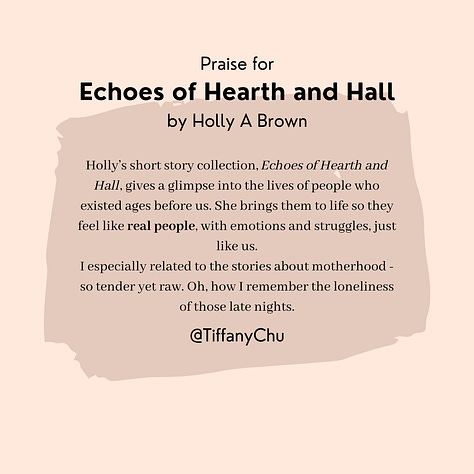
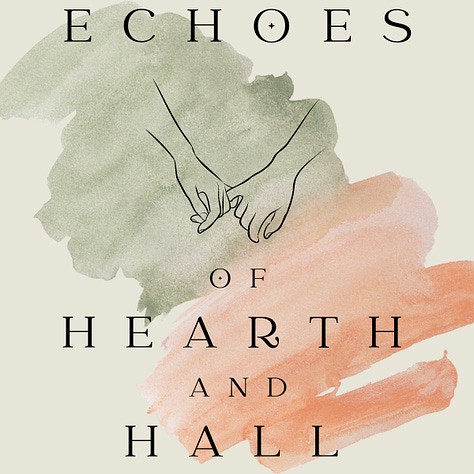
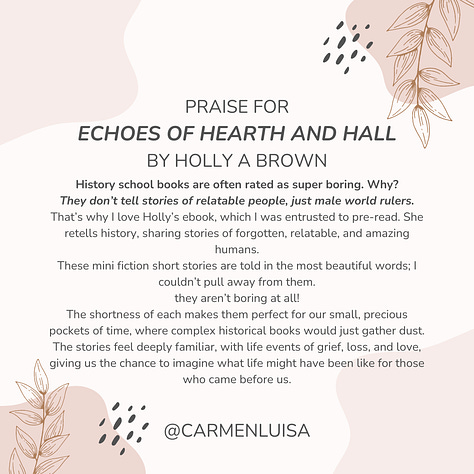


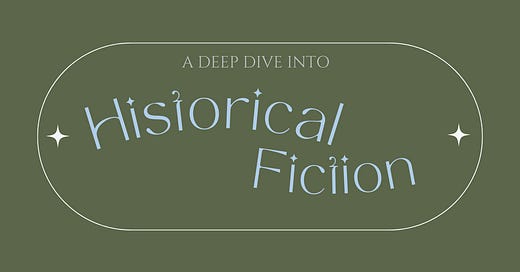







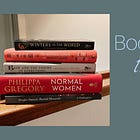



I like the fact that you intend to keep on doing some of those not-to-dos. I will be exactly the same. My not-to-do is that I write for myself first, and if others like what I do, then that's good. If not, then I simply put it down to different tastes. I don't think I could ever 'write to market' in that sense. If this means I shall never be successful (at least not within my own lifetime) then so be it - because at the very least I will know that I always wrote what I wanted to write, and never what others wanted me to write.
So my not-to-do only applies to those who want to be commercially viable, I guess. For me, it's not even a 'to do', it is a 'must do'.